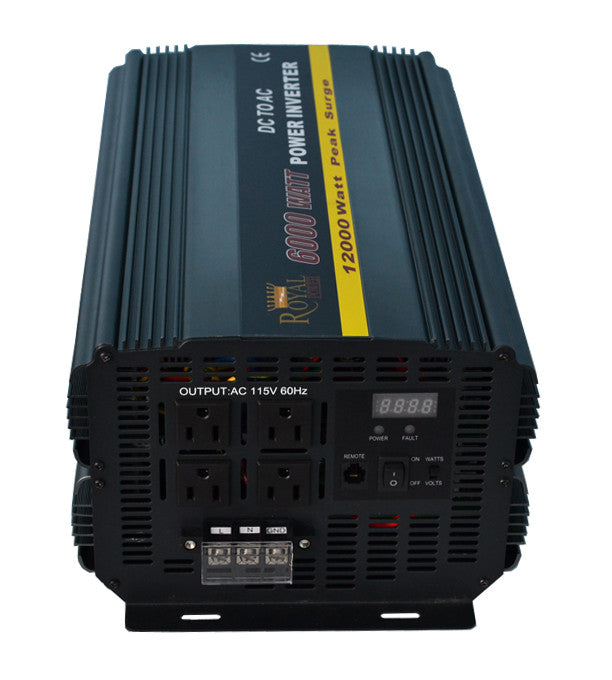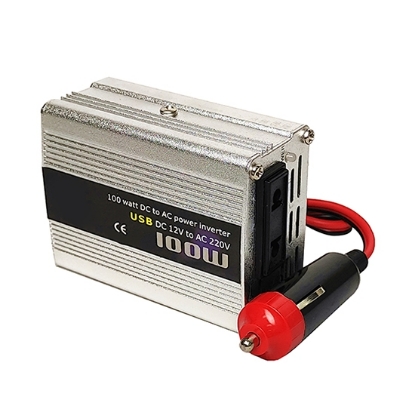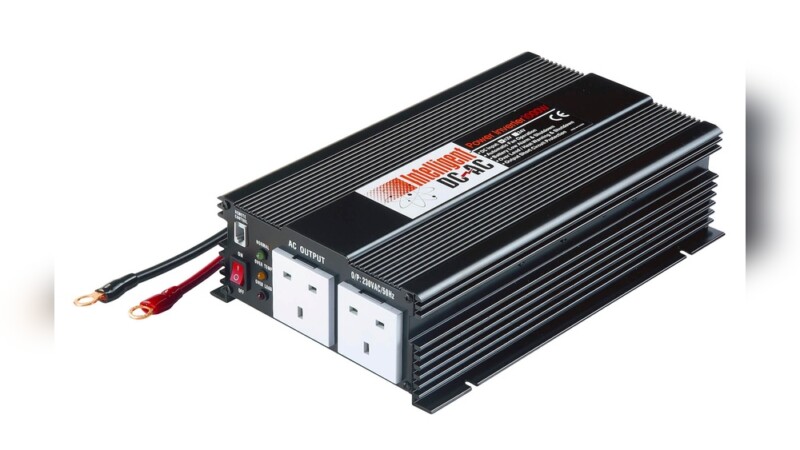Are you looking for a reliable way to power your home or devices when only a DC source, like a battery or solar panel, is available? Understanding how a power inverter converts DC to AC could be the key to unlocking energy independence and flexibility.
Imagine running your everyday appliances smoothly, even off the grid or during a power outage.
You’ll discover exactly how power inverters work, why they matter to you, and how to choose the right one for your needs.
Keep reading to gain practical insights that will empower you to make smarter energy choices and keep your devices running no matter where you are.

Credit: www.junchipower.com
Basics Of Dc To Ac Conversion
DC power comes from sources like batteries and solar panels. These provide a steady, one-way flow of electricity. To use this power for homes or devices, it must change into AC power, which flows back and forth.
Electronic switches inside the inverter flip the DC current direction rapidly. This switching creates the alternating current (AC) waveform. Common switches are transistors arranged in an H-bridge circuit.
Transformers then change the voltage level of the AC power. This step is needed to match the voltage requirements of household appliances.
Filters and stabilizers clean the output. They remove noise and keep the voltage steady. This is important for devices that need clean and stable electricity.
Types Of Power Inverters
Square wave inverters create a simple on-off voltage wave. They are cheap but produce low-quality power. This can cause noise in some devices and damage sensitive electronics.
Modified sine wave inverters produce a stepped wave closer to real AC power. They work with most appliances and are affordable. Some devices may still make noise or run less efficiently.
Pure sine wave inverters generate a smooth, clean wave like the power from the grid. They are best for all types of electronics, including sensitive or medical devices. These inverters are more expensive but provide the best performance and safety.
Key Components Inside An Inverter
Switching devices like transistors flip the DC input rapidly. This creates a pulse that imitates AC current. Control circuits manage this switching to keep the output stable and safe.
A transformer changes the voltage level from low to high or vice versa. It helps match the voltage needs of the devices using the power.
Filters and capacitors smooth the output wave. They remove noise and spikes, making the AC power safe for sensitive electronics like computers and TVs.

Credit: www.powerinverters.com
Calculating Power And Runtime
Current draw is the amount of electric current your device needs to run. It is measured in amperes (A).
To find it, divide the power (in watts) by the voltage (in volts). For example, a 120-watt device running on 12 volts will draw 10 amps.
Battery capacity is how much charge a battery can hold. It is given in ampere-hours (Ah). A 100 Ah battery can supply 1 amp for 100 hours or 10 amps for 10 hours.
To calculate runtime, divide the battery capacity by the current draw. For example, a 100 Ah battery powering a 10-amp device will last about 10 hours.
| Step | Formula | Example |
|---|---|---|
| Current Draw | Power (W) ÷ Voltage (V) | 120 W ÷ 12 V = 10 A |
| Runtime (hours) | Battery Capacity (Ah) ÷ Current Draw (A) | 100 Ah ÷ 10 A = 10 hours |
Runtime can be shown in minutes or hours. To convert hours to minutes, multiply by 60. For example, 2 hours equals 120 minutes.
Improving Energy Efficiency
Reducing load demand helps save energy and extends inverter life. Use only the devices that are necessary at any time. Turning off unused appliances lowers the total power needed. This keeps the inverter working smoothly and reduces stress on the battery.
Optimizing battery usage means managing battery charge carefully. Avoid deep discharges to protect battery health. Charging batteries fully but not overcharging keeps them ready longer. Use energy during the day when solar power is available to save battery power for later.
Maintaining stable output keeps devices running well without damage. The inverter should provide consistent voltage and frequency.
Sudden spikes or drops can harm electronics. Proper settings and quality components help maintain smooth power flow and protect connected equipment.
Applications Of Dc To Ac Inverters
Residential power backup uses DC to AC inverters to keep homes running during outages. They convert battery-stored DC electricity into AC power for household devices. This ensures lights, fans, and TVs work without interruption.
Solar energy systems rely on these inverters to change DC from solar panels into usable AC electricity. This power runs home appliances or feeds into the electrical grid. It makes solar energy practical and efficient.
Portable power solutions use inverters in devices like camping generators or car power supplies. They turn DC from batteries into AC to run small electronics anywhere. This adds convenience and mobility.
Industrial uses include powering machines and tools that require AC electricity. Factories use inverters to convert DC power from batteries or solar setups. This supports smooth, continuous operation in various environments.
Choosing The Right Inverter
Start by calculating total power your devices need. Add watts of all items you want to run at once. Choose an inverter with a power rating higher than this total. This helps avoid overload and damage.
There are mainly two types: pure sine wave and modified sine wave. Pure sine wave inverters give cleaner power, good for sensitive electronics. Modified sine wave inverters cost less but may cause noise or heat in some devices.
Set a clear budget before buying. Remember, cheaper inverters may last less or cause problems. Balance price with quality for best value.
| Brand | Warranty | Why it matters |
|---|---|---|
| Well-known | 1-3 years | Offers better support and product reliability |
| Unknown | Short or none | Risk of poor quality and no repair help |
Choose brands with good customer reviews and a solid warranty. It saves money and stress later.

Credit: www.inverter.com
Common Troubleshooting Tips
Identifying faulty components helps fix inverter problems fast. Check fuses and wiring for damage or loose parts. Inspect transistors and capacitors for burns or cracks. A multimeter can test if parts work properly. Faulty parts cause power loss or no output.
Preventing overloads keeps the inverter safe. Avoid using devices that draw more power than the inverter’s rating. Overloads can cause shutdowns or damage. Use a power meter to monitor load. Turn off unused devices to reduce load.
Maintaining battery health extends inverter life. Keep batteries charged and clean. Check for corrosion on terminals and clean if needed. Avoid deep discharges to prevent battery damage. Replace old or weak batteries to ensure stable power supply.
Frequently Asked Questions
Can An Inverter Convert Dc To Ac?
Yes, an inverter converts direct current (DC) into alternating current (AC). It switches DC direction rapidly to create AC.
How Long Will A 12v Battery Last With A 3000w Inverter?
A 12V battery’s runtime with a 3000W inverter depends on its amp-hour (Ah) rating. Divide battery Ah by inverter current draw.
What Are The Disadvantages Of Dc To Ac Inverter?
DC to AC inverters can cause energy loss, produce electrical noise, and may have limited lifespan. They also add cost and complexity.
What Should You Not Plug Into An Inverter?
Avoid plugging high-wattage devices, inductive loads like microwaves, and sensitive electronics without pure sine wave output into an inverter.
Conclusion
Power inverters play a vital role in converting DC to AC power. They allow the use of common household appliances with battery or solar power.
Understanding their function helps you choose the right inverter for your needs. Clean and stable AC output protects sensitive devices.
Investing in a quality inverter ensures efficient energy use. Whether for home or travel, inverters provide flexible power solutions. Keep these points in mind when exploring DC to AC conversion options.

